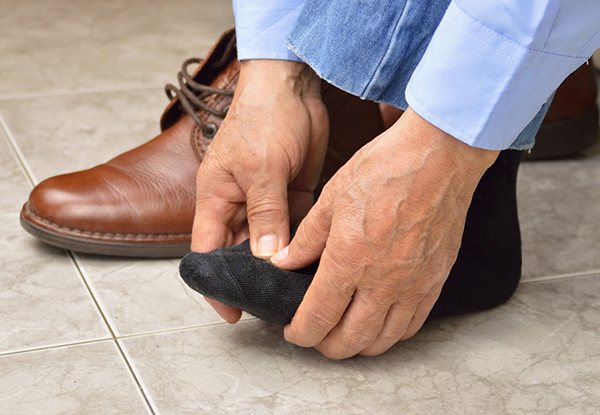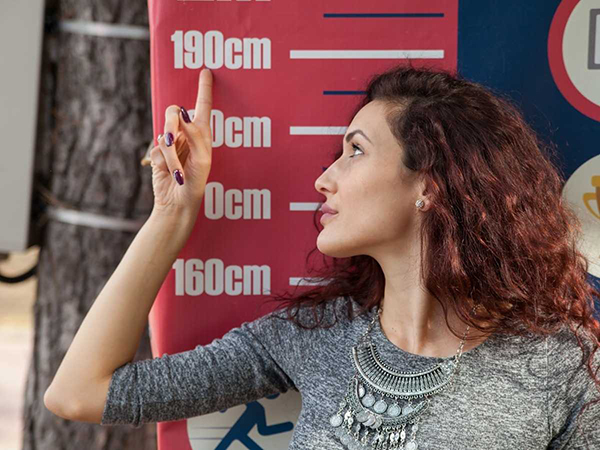You ever look back at an old photo and think, “Wait… when did I get taller than my dad?” Yeah, growth sneaks up like that. But here’s the thing—your height doesn’t just shoot up randomly. It follows a biological rhythm that’s wired deep into your bones (literally—your growth plates are the timekeepers). Understanding when you stop growing isn’t just about curiosity; it can impact everything from how your doctor reads your health chart to whether you’re still eligible for your high school basketball team.
So how do you know when you’ve hit your max height? Let’s break it down.
Puberty Timeline and Growth Spurts
You ever wake up one morning, glance in the mirror, and swear your arms got longer overnight? That’s puberty playing its favorite card—the growth spurt. Now, here’s what I’ve seen over the years: most boys hit their biggest height jump between ages 12 and 16, while girls usually peak earlier, around 10 to 14. That window? It’s wild. You go from kid-sized shoes to outgrowing your jeans in a single semester.
According to the CDC’s growth charts (which, yes, I’ve stared at way too many times), girls often reach their final height closer to 15, while boys might still be creeping upward until 17 or even 18. But there’s a twist—not everyone follows the “textbook” Tanner stages like clockwork. Some hit that vertical takeoff early, some late, and a few just cruise steadily without a big spike. What really matters? Watching your height percentile over time—not just the number on the ruler.
In my experience, the real clue you’re nearing the end of your growth? It’s when those growth plates—yeah, the soft tissue at the end of your long bones—start to close up. But don’t worry, we’ll get into that soon.
Closed Growth Plates (Epiphyseal Plates)
Alright, so here’s something I wish more people talked about: your height doesn’t just stop growing out of nowhere—your growth plates actually close. And when they do, that’s it. Game over for getting taller.
Now, what I’ve found (especially from teens I’ve worked with during sports screenings) is that people often feel like they’ve stopped growing, but don’t actually know for sure. That’s where X-rays come in. A pediatric orthopedist can order a simple bone age scan—usually of your hand and wrist—to check whether your epiphyseal plates have fused. When those cartilage zones turn into solid bone (a process called ossification), you’re officially done.
In my experience, most doctors don’t check growth plates unless there’s a reason—like delayed development or a sports clearance that hinges on growth status. But if you’re really wondering if you’ve maxed out your height, that scan is your clearest answer.
Here’s the thing though: even if your bones are done growing, your body might still be maturing in other ways. (And yeah, I’ve seen guys gain a half inch in their early 20s, but that’s the rare exception.)

Slowing or Stopping of Shoe Size Growth
You know that moment when you stop needing new shoes every few months? Yeah, that can actually be a big clue that your body’s winding down its growth phase. In fact, a plateau in foot size is often one of the earlier signs that your height growth is slowing—or even done.
From what I’ve seen (and trust me, I’ve been through a lot of size chart rabbit holes—especially with Nike and Adidas), most teens hit their final shoe size about a year or two before they finish growing taller. So if you’ve been hovering at a men’s 9 or women’s 8 for over a year with zero change, it’s not just your wallet breathing a sigh of relief—it could mean your growth plates are starting to close up.
Now, this isn’t a perfect science—some people hit a foot size plateau and still squeeze out another inch in height later on. But when your foot growth stops and stays there, especially during late adolescence, it usually lines up with skeletal maturity. I’ve even had clients use past shoe sizes to pinpoint when their growth really began slowing down.
So next time you try on sneakers and they still fit just right? That might be your body telling you it’s hit the finish line.
Family Height Patterns
Ever look around the dinner table and wonder, “Am I gonna end up tall like my dad or stay short like my uncle?” Yeah—genetics plays a huge role in how tall you’ll be, but it’s not as straightforward as copying your parents’ heights line by line.
In my experience, most people land somewhere between their parents’ heights, not exactly matching either. There’s even a basic formula (you’ve probably heard it): for boys, take your mom’s height, add 5 inches, average with your dad’s—and vice versa for girls. It’s called the mid-parental height calculator, and while it’s helpful, it’s definitely not crystal-ball accurate. Siblings can end up a few inches apart, even with the same DNA pool (don’t ask me why my younger brother got all the height genes—I’m still bitter).
What I’ve found is that genetics set the ceiling, but lifestyle factors—nutrition, sleep, activity—determine whether you actually reach that ceiling. So, sure, look at your family tree, but don’t treat it like a height prophecy.
If you’re wondering where you’ll land, start tracking growth patterns now—and don’t ignore the small clues. (Foot size leveling off? Growth plate scans? They all tell a piece of the story.)
Signs in Males vs Females
Here’s something I’ve seen play out again and again—girls tend to hit the finish line on growth way earlier than boys. And if you’ve ever watched a middle school basketball game, you’ve probably noticed the girls towering over the boys… until high school flips that script.
You see, estrogen kicks off puberty earlier in females, which also means their growth spurt starts—and ends—sooner. Most girls stop growing in height about 1–2 years after their first period, typically between ages 14 and 15. Boys, on the other hand, usually start puberty later and grow until around 16 to 18, sometimes even brushing into their early 20s if their growth plates take their sweet time closing. (I’ve seen it happen more than once.)
Now, here’s the interesting part: school sports physicals often catch this difference. Coaches and trainers will casually mention things like, “She’s probably done growing,” while still expecting a sophomore guy to gain a couple more inches.
What I’ve found is that sex hormones—testosterone for boys, estrogen for girls—basically set the pace, and your final height is just riding that hormonal rollercoaster. So if you’re comparing with siblings or teammates, just know: gender makes a difference, and it’s not always a fair race.
Physical Changes That Signal End of Growth
You ever catch a glimpse of yourself in the school bathroom mirror and think, “When did I start looking like an adult?” Yeah—that shift in your appearance can actually be one of the clearest signs you’ve finished growing.
From what I’ve seen over the years, once certain physical changes show up and stick, it’s a strong indicator your body’s hit the final stretch of puberty. For guys, it’s things like a deeper voice that doesn’t crack anymore, facial hair that grows in consistently (not just a scraggly upper-lip situation), and broader shoulders filling out your shirts. For girls, it’s usually hip widening, full breast development, and a more stable menstrual cycle. Both tend to show an adult-like body frame and fewer height spurts after these changes settle in.
What I’ve found is that these signs line up with hormonal maturity, meaning your growth plates are probably fused or getting close. Back in high school, I remember a buddy whose voice dropped and his shoe size stopped changing within the same year—by senior year, he hadn’t grown a single inch taller.
So if your body’s been holding steady and those big puberty shifts have already happened? Chances are, your growing days are behind you.

Medical Confirmation (Doctor Visit or Bone Scan)
If you’ve been wondering, “Am I done growing or not?”—you’re not alone. I’ve had a lot of teens (and honestly, a few anxious parents) ask me that exact question during sports physicals or school check-ups. The only reliable way to get a confirmed answer is through a medical evaluation, usually starting with your pediatrician.
Now, here’s how it typically works: your doctor might order a bone age scan, which is just a quick X-ray of your hand and wrist. Sounds simple, right? But it’s actually kind of fascinating—they compare your bones to a standard growth atlas to see how much development has occurred. If those growth plates (aka epiphyseal plates) are closed, that’s your official signal: height growth is done.
In some cases, especially if something seems off—like delayed puberty or unusual growth patterns—you might be referred to a pediatric endocrinologist. They’ll dig deeper with hormone tests and skeletal evaluations.
What I’ve found is, if you really want peace of mind about your height future, this is the route to take. Don’t just guess based on shoe size or gym class comparisons—get the scan, get the facts.
Emotional Readiness and Lifestyle Changes
At some point—maybe it hits you after a team banquet, or maybe it’s during that quiet walk across the stage at high school graduation—you realize: it’s not just your body that’s changed. You’re thinking differently. Your goals shift. You start planning, not just reacting. And yeah, that mindset shift often mirrors the tail-end of physical growth.
In my experience, emotional maturity tends to show up around the time growth stops. You’re not obsessing over shoe size or hoping for that extra inch anymore. You’re building confidence in the body you’ve got. You’re focusing more on career paths, independence, college plans—or whatever “next chapter” looks like for you. That shift in focus? It’s subtle but huge.
What I’ve found is this: when your energy moves away from “What will I become?” toward “Here’s who I am”, it’s often a sign your body’s settled too. You’re moving into adult routines, caring more about strength, sleep, and mental clarity than just hitting milestones.
So if you’re starting to feel grown, not just look it—there’s a good chance your growth journey, at least physically, is wrapping up.
Hi there! My name is Erika Gina, and I am the author of Choose Supplement, a website dedicated to helping people achieve their height goals naturally and effectively. With over 10 years of experience as a height increase expert, I have helped countless individuals increase their height through diet, exercise, and lifestyle changes.
My passion for this field stems from my own struggles with being short, and I am committed to sharing my knowledge and experience to help others overcome similar challenges. On my website, you will find a wealth of information and resources, including tips, exercises, and product reviews, all designed to help you grow taller and improve your confidence and overall well-being. I am excited to be a part of your height journey and look forward to supporting you every step of the way.
Name: Erika Gina
Address: 2949 Virtual Way, Vancouver, BC V5M 4X3, Canada
Email: [email protected]
